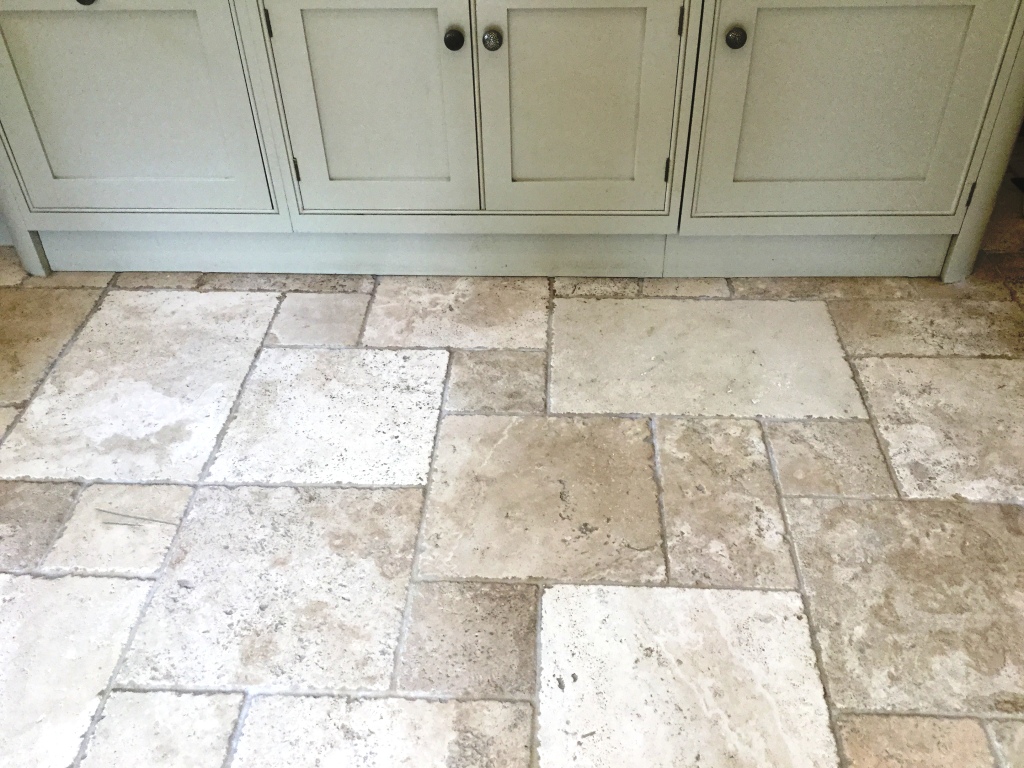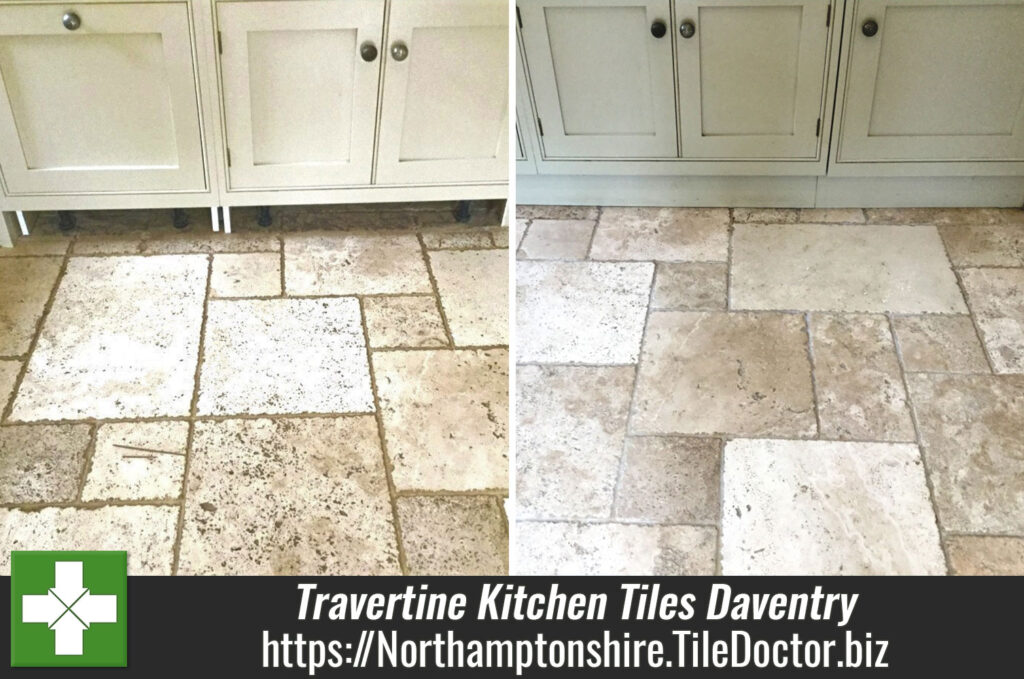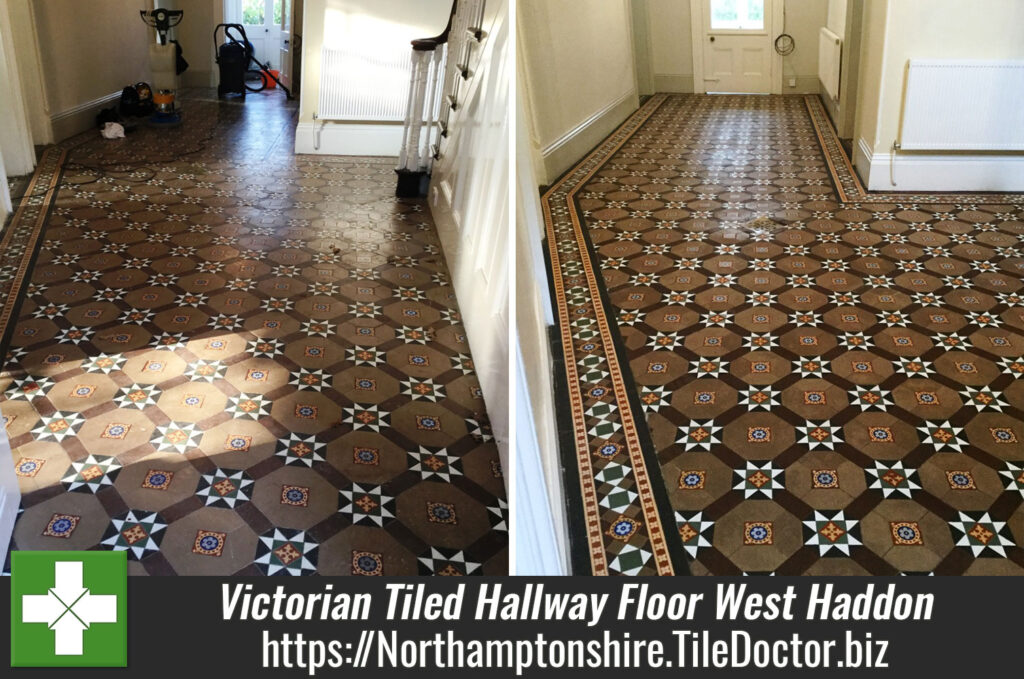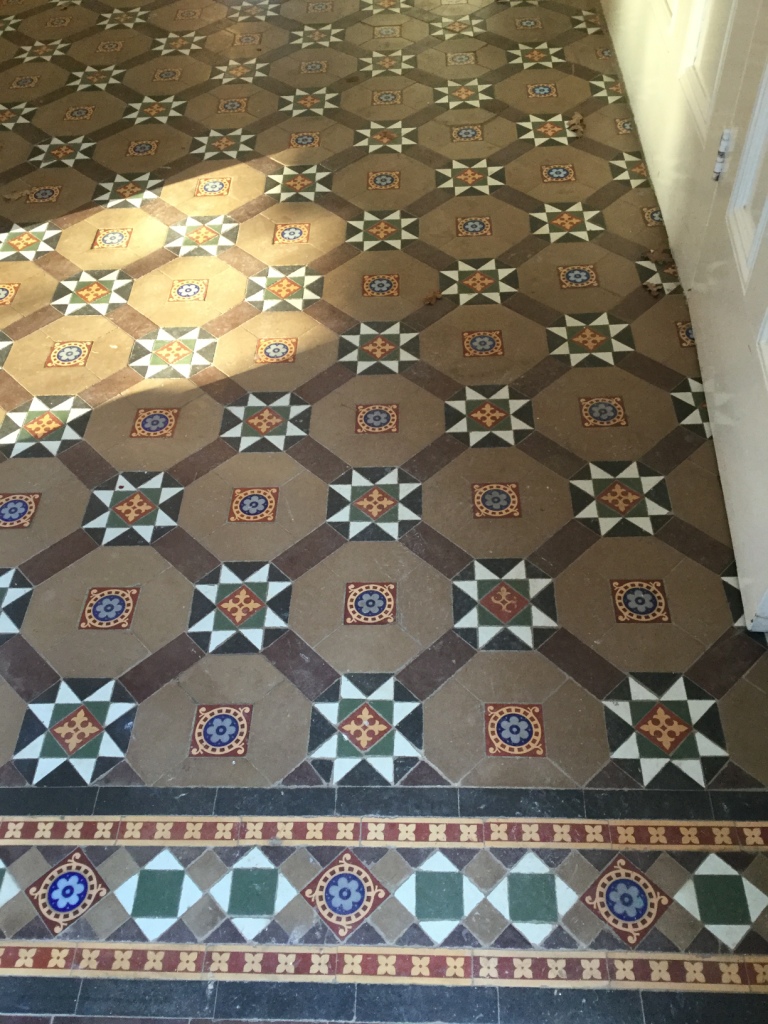Badly Stained and Pitted Travertine Kitchen Tiles Restored in Daventry
This Travertine Tiled kitchen floor was in a farmhouse close to the village of Newnham near Daventry. The client had called us in because she was concerned that her floor was becoming increasingly difficult to keep clean which was due to the small holes and pits becoming ingrained with soil and it was becoming difficult to remove as the original sealant had worn off.
Hopefully you can see from the pictures the results that can be achieved on a badly stained and pitted Travertine floor. The first photo below shows the extent of the problem due to many holes in the floor, this is a characteristic of Travertine and normally these holes are filled in the factory but the filler does come out over time leaving holes.

Cleaning a Pitted Travertine Tiled Floor
The floor was cleaned using a combination of Tile Doctor Burnishing Pads to re-surface the tile and the application of Tile Doctor Grout Pro-Clean agitated with a stiff brush to clean out embedded soil in the pits and grout lines. The Burnishing pads fit a rotary floor polishing machine and come in a series of different grits which are applied from Coarse through Medium and then Fine and lubricated with a little water.
I also carried out some repairs to the larger holes with a travertine filler that was mixed to match the existing colours. The second picture shows the repairs in progress, the filler is mixed and applied before leaving an hour and then polishing off any excess filler with dry cloth, the floor was then vacuumed and allowed to fully dry overnight allowing the product to harden.

Sealing a Travertine Tiled Floor
The floor was polished and sealed the following day using 2 coats of Tile Doctor Ultra Seal sealant to protect the grout lines and stone from any staining in future, it leaves a no-sheen natural look which worked very well in the kitchen area.
I waited a for the sealant to dry and then carried out a water repellency test to check it was fully sealed before giving the floor a final polish using a Tile Doctor Polishing Pad.

Professional Travertine Tiled Floor Restoration in Northamptonshire
Badly Stained and Pitted Travertine Kitchen Tiles Restored in Daventry Read More »






